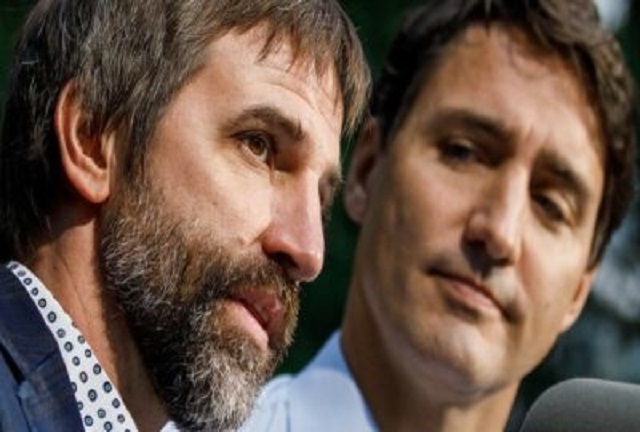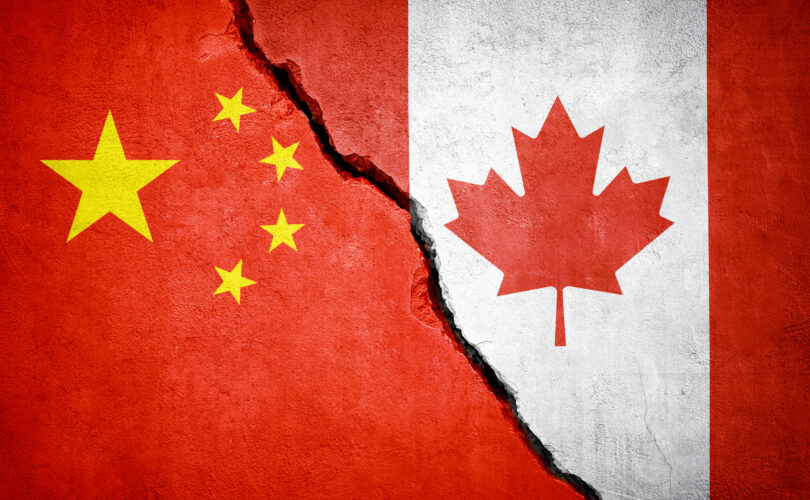From The Center Square
By Andrew Rice
Anti-oil and gas advocates across the country have pursued litigation in recent years attempting to force the fossil fuel industry to pay for decades of financial damages the advocates claim were caused by climate change.
Several cases have been dismissed while others advanced through court systems, with some being considered before the U.S. Supreme Court in 2026. Critics of the litigation call it “woke lawfare” and an attempt to force progressive political policies via the judicial system.
Critics also argue the lawsuits threaten U.S. energy independence and, depending on outcomes, will have sweeping impacts on every American.
Here are some of those cases.
Chevron USA Inc. v. Plaquemines Parish, Louisiana
On Jan. 12, 2026, the U.S. Supreme Court will hear oral arguments in Plaquemines Parish, Louisiana, vs. Chevron USA Inc. The case questions to what extent a state court can litigate against an oil company for its production of oil even if it obtained federal permits to produce the oil.
The litigation challenges activities of the oil companies dating back to World War II in some cases. Chevron argued the lawsuit was flawed, claiming that the activities in question were permitted, legal, and often conducted under federal direction – particularly those tied to national security during World War II.
A Plaquemines Parish jury in April ordered Chevron to pay $744 million in damages for its role in the degradation of the state’s coastal wetlands. Environmental activists celebrated the verdict. It was the first of 42 lawsuits filed since 2013 by parishes across coastal Louisiana to go to trial.
The Trump administration’s Justice Department stepped in on Chevron’s side, urging the Supreme Court to move the case from state court to federal court.
Business groups and energy advocates warned the verdict will drive jobs and investment out of Louisiana. The Louisiana Association of Business and Industry called the decision “shortsighted,” saying it would “brand Louisiana as a state that will extort the most recognizable companies on earth for billions of dollars, decades later.”
O.H. Skinner, executive director of Alliance for Consumers, told the Center Square the case seeks to score large settlements from the energy industry and stop oil production.
“The case arises from a broader campaign of woke lawfare in which activists and municipal governments seek to use courtrooms to determine what companies are allowed to produce and what consumers can buy,” Skinner said.
Suncor Energy Inc. v. Boulder
The nation’s highest court is still deciding whether it will hear arguments in Suncor Energy Inc. v. Boulder; a case to decide whether state and local governments can use nuisance laws to sue energy companies for activities that may cause climate change.
The case, originating in Colorado, centers around a City of Boulder and Boulder County lawsuit in state court against Suncor Energy claiming it misled the public in its activities that the local governments claim led to climate change effects.
Lawyers for Suncor Energy argue that allowing a case like this one to play out goes against protections in the Clean Air Act that prevent lawsuits from occurring against emitters from across state lines.
“Public nuisance can’t be used for global problems. It can be used for local problems,” Skinner told The Center Square. “That’s what it’s supposed to be used for.”
However, Skinner said many organizations that are pursuing climate change litigation are seeking to bankrupt energy companies with large monetary settlements. He said litigants will likely attempt to drain energy companies of their resources and use the funds to advocate certain ideological causes.
“These are highly ideological dark-money-funded, multi-faceted legal campaigns to bankrupt an entire industry and confiscate it for ideological reasons,” Skinner said.
City and County of Honolulu v. Sunoco
Similarly, in 2020, City and County of Honolulu v. Sunoco was one of the first examples of public nuisance lawsuits pursued in a state court. The city and county of Honolulu filed a lawsuit in 2020 accusing oil and gas companies, including Sunoco, Exxon Mobil, BP, Chevron and Shell, of misleading the public for decades about the dangers of climate change induced by burning fossil fuels.
The companies asked the U.S. Supreme Court to intervene in the case, but the court, without ruling on the merits, declined to do so in January.
While the case is based in Hawaii, Skinner said litigants there hope it will have far-reaching effects across the country.
“They’re not trying to stop behavior just in those states,” Skinner said. ”The thing that really freaks me out is how people in regular, everyday, real America are going to potentially be affected.”
The People of the State of California v. Exxon Mobil Corporation
Going a step further than Boulder and Honolulu, California Democrat Attorney General Rob Bonta filed a complaint against ExxonMobil in 2024 for what he says are its contributions to “the deluge of plastic pollution” affecting the state.
Exxon countersued, alleging “Bonta and the US Proxies – the former for political gain and the latter pawns for the Foreign Interests – have engaged in a deliberate smear campaign against ExxonMobil, falsely claiming that ExxonMobil’s effective and innovative advanced recycling technology is a ‘false promise’ and ‘not based on truth.,” American Tort Reform Foundation reported.
One of the foreign interests is IEJF, an Australian nonprofit that’s connected to an Australian mining conmpany “that competes with ExxonMobil in the low carbon solutions and energy transition markets, ATRF reported.
Skinner said the litigants in this case are attempting to significantly reduce plastic use throughout the state of California and potentially beyond.
“That’ll make your average person’s life dramatically harder, and it’ll make a lot of things a lot more expensive, and it’ll make having kids, like, brutal,” Skinner said.
Leon v. Exxon Mobil Corp.
Aside from monetary settlements, petitioners in this case also are seeking wrongful death claims against energy companies for their contributions to climate change. The case stems from a woman in Washington state who said her mother died from heat-related illness due to the exacerbated effects of climate change.
She is suing energy companies for their alleged creation of conditions over a period of decades that led to increased temperatures on the day her mother died.
Skinner told The Center Square this case is one of the more blatant examples of ideology affecting the way a litigant pursues cases.
“I think they care because a death is worth a lot of money,” Skinner said. “The climate homicide cases are one of the more far-fetched legal theories I’ve ever seen, because you’re leveling this incredibly staggering charge.”
Climate cases will continue to move through the court system, with one to be heard before the U.S. Supreme Court in early 2026.
Skinner is urging the U.S. Supreme Court and lower courts to rule in favor of energy companies across the country.
“We want the energy companies to win, not because they are perfect actors, but because the alternative is that our lives are governed day in and day out by woke trial lawyers, woke [nongovernmental organizations] and local governments,” Skinner said.

















The federal Liberal government’s approach to energy policy has created problematic regional divisions across Canada. It’s time for the East to reject these crass politics and show greater support for the West.
Two recent court decisions — one at the Supreme Court and another at the Federal Court — have ruled against the federal government with respect to the Impact Assessment Act (the “No More Pipelines Bill”) and the single-use plastics ban. The courts found these laws to be unconstitutional as the federal government had intruded on provincial jurisdiction, among some other considerations such as the absurdity of declaring plastics “toxic.”
Around the same time, Environment Minister Steven Guilbeault announced a punitive new emissions cap on the oil and gas industry at COP28, which was also attended by Alberta Premier Danielle Smith and Saskatchewan Premier Scott Moe. This was seemingly timed to embarrass Guilbeault’s provincial counterparts and the Canadian oil and gas executives in attendance.
Back in October, Prime Minister Justin Trudeau announced a three-year exemption for home heating oil from the carbon tax. As heating oil is only used extensively in the Atlantic provinces, this was clearly an attempt to win back sharply declining Liberal support in that region. After Liberals claimed the carbon tax must be applied everywhere — in every industry and every region — this move served as a complete refutation of everything the Liberals had said before. It completely undermined their rationale for the carbon tax.
Meanwhile, countries around the world such as the United Kingdom and much of the European Union have been abandoning or significantly watering down their “net-zero” plans. Auto manufacturers are backing off production of electric vehicles (EVs) as they are not selling and all the lofty goals of the climate-crisis crowd are being questioned, as it has become clear the impact of these policies is hugely damaging to the economy and our standard of living.
For the trillions of dollars spent around the globe to attain the elusive net-zero target, very little has been achieved other than negative impacts on average citizens. Meanwhile, an elite class of “green” activists and government officials travel around the world first-class on the taxpayers’ dime, spewing much carbon in the process.
There are currently about 400 different laws, regulations, taxes and other measures in Canada that serve as greenhouse gas (GHG) reduction measures. No one has a clue which of them are effective or useless or how much they are damaging our economy and reducing Canadians’ standard of living needlessly. This is because the Trudeau government never evaluates the effectiveness of its policies.
The Liberals first sold us the carbon tax as the only measure needed to reduce GHGs, arguing it was a market-based mechanism that would motivate consumers and businesses to make their own sensible decisions to reduce fossil fuel usage. We were also told by former environment minister Catherine McKenna the carbon tax would never exceed $50 a tonne, which we now know was just one of many Liberal bald-faced lies as the tax is slated to increase to at least $170/tonne by 2030.
Despite dishonest claims the carbon tax was the only measure needed, we have subsequently seen the so-called Clean Fuel Standard, the absurdly red-tape intensive Impact Assessment Act (which the Supreme Court has now overthrown), and Guilbeault’s recent emissions cap.
Interestingly, other parts of the economy emit similar amounts of GHGs as the oil and gas sector, but those industries are not subject to an emissions cap. Could it be because those industries are located in regions that tend to vote Liberal, unlike Alberta and Saskatchewan? Perish the thought!
Throughout all of the climate policy overkill, the provinces of Alberta and Saskatchewan have remained steadfast in opposing foolish federal government initiatives based on facts, science and constitutional law. All Canadians should know that Alberta in particular is a disproportionately significant contributor to the rest of Canada in many ways — equalization payments, contributions to programs such as CPP and Employment Insurance as well as personal and corporate taxation and royalty revenue from the oil and gas industry.
It was truly ironic that, in the context of the federal budget earlier this year, Finance Minister Chrystia Freeland boasted that government revenues had come in higher than forecast. Yet the key source for this excess revenue was the oil and gas sector the Liberals are working hard to kill.
Alberta and Saskatchewan have been doing yeoman’s work defending the jurisdictional rights of all provinces and opposing the costly and unproductive federal government policies. At the same time, their success is boosting the economy of the whole country.
While Trudeau plays his destructive and divisive regional games — putting in place policies that benefit some parts of Canada while punishing others — all in the name of Liberal votes, the whole of Canada should call his bluff and support the leadership role that is being taken by the Prairie provinces.
The next federal election would be an ideal time to demonstrate that support.
Catherine Swift is president of the Coalition of Concerned Manufacturers and Businesses of Canada